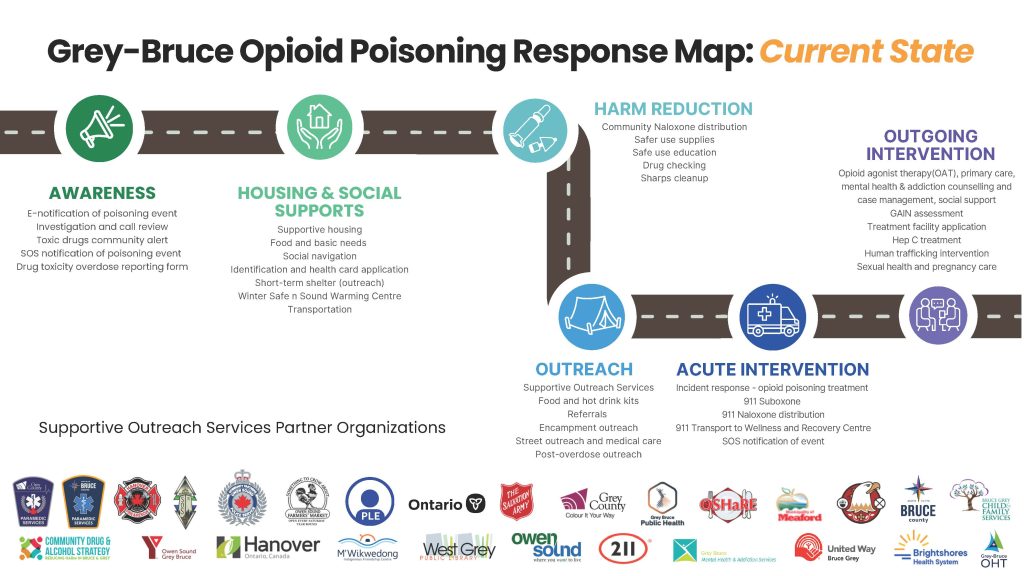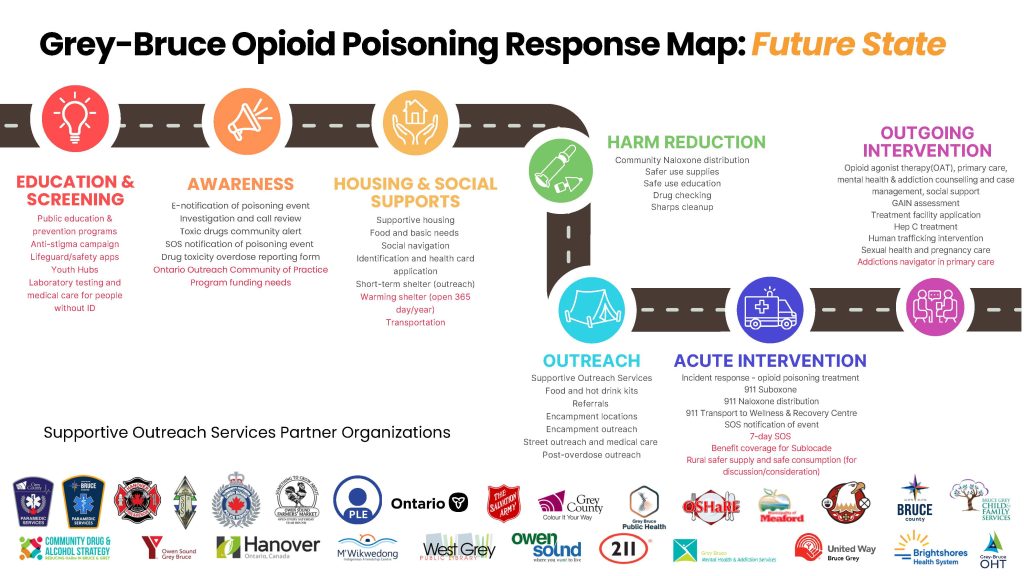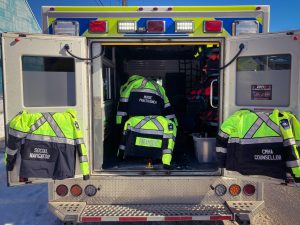Building a Stronger Bruce Grey: Addressing Crises Through Collective Action and Sustainable Solutions
The communities of Bruce Grey are facing an unprecedented convergence of crises, including the opioid epidemic, housing instability, and homelessness. As these challenges grow, the burden on local charities and organizations intensifies. While the United Way of Bruce Grey leads this update, it reflects the collective efforts of more than 25 agencies, charities, programs, and municipalities united in their mission to combat these urgent issues.
Despite the remarkable support from donors, the region is grappling with an overreliance on charitable organizations to provide essential services—ranging from food and shelter to medical care. The current funding model, heavily dependent on sporadic donations and short-term grants, falls short of sustaining the necessary infrastructure, leading to staff turnover and service limitations. The need for stable, consistent funding has never been more pressing.
This update delves into the current state of response efforts, highlights the achievements and gaps in key programs, and outlines the collaborative strategies being employed to address the growing needs in our community. Moreover, it provides a clear call to action for individuals, donors, and government leaders to step up and support the vital work being done to create lasting solutions.
People often point out programs in other communities and ask if we can replicate it here. We could, if we had someone donating half or even the full million dollars that were donated to create that project.
Regardless of the challenges, there is a significant collaboration between governments, charities, agencies and programs to attempt to meet the growing need in our community.
Opiate Response
For nearly a decade, the opioid crisis and increasingly toxic drug supply have devastated communities across Ontario.
In 2023, over 2,500 Ontarians died due to opioids. The crisis has not only taken a human toll but has also imposed significant social and economic burdens on municipalities, including emergency response, homelessness prevention, health and community services.
A 2021 study revealed that nearly 60 percent of individuals who succumbed to opioid toxicity were employed, with one-third of these individuals working in the construction industry.
Since 2018, Grey County has reported a total of 98 opioid-related deaths. The breakdown of these fatalities is as follows:
- 2018: 4 deaths
- 2019: 10 deaths
- 2020: 20 deaths
- 2021: 29 deaths
- 2022: 12 deaths
- 2023: 23 deaths
The year 2023 alone accounted for 163 patient calls for Grey County Paramedic Services due to opioid poisoning. A significant proportion of these deaths and poisoning incidents are predominantly occurring in Owen Sound, highlighting a critical area of concern within Grey County.
Grey Bruce Public Health Unit data indicates that in 2023 19,482 (11.1%) individuals have been prescribed opioids for pain management
We are pleased to release an Opioid Response Map. These 2 graphics highlight the current state of response is, and what the future state could be to address the opiate crisis. The current state is what is happening now, with the funding available now.

The future state is a bit of a plan to move forward and have a greater impact on the issues in the broader community, should funding be made available.

One successful aspect of the response map is the highly successful and impactful SOS Program. Unfortunately, it only operates in Grey County and only operates 8 am to 6 pm Monday to Thursday. We know there is a great need for 7 days a week, 24-hours-a-day program with an expansion of the full program to Bruce County. It’s a constant request from our Policing partners, to give them more support and tools. But we’re scrambling with the funding we have to keep the program running in the hours it currently offers.

To be clear, we need $250 000 for a dedicated medical needs van and an additional $500 000 per year to expand SOS to 7 days a week.
SOS data:
Since its inception in February of 2022, the mobile SOS program has had 4110 interactions with people throughout Grey County. Of those, 76% are returning to engage with the program consistently.
The people are accessing
- counseling assessment and case management (35%)
- primary care (24%).
- addiction medication, either starting, renewing or restarting. (10%)
- Of the 2657 medical interventions provided, 909 (34%) were for opioid treatment.
In addition to the SOS Program other local agencies continue to address the multiple social concerns that continue to grow in the current economic climate.
Food Insecurity
Food insecurity continues to grow with record food bank visits and local food programs struggling to meet the ever growing need. In the first year of OSHaRE’s operations they served 20 000 meals, in July of 2024 they served 17 000.
Of the 22 food banks in the region, many are reporting significant increases in requests for help. The Wiarton Salvation Army recently put out a call for donations as their shelves were essentially bare of food. The increase is not just new clients, but clients who need more food than the once a month hamper provided by the food bank. Food bank hampers provide approximately 5-7 days worth of food based on the household size.
Studies show that food insecurity is solved by income solutions, not by charity. More food drives help out short-term, changing income levels is the only way to reduce food insecurity.
Homelessness
The most recent homelessness enumeration in Grey County was conducted on October 18, 2021, and it identified 142 people experiencing homelessness. Of these, 11 were staying in self-funded motels, 58 were staying with others, 20 were staying in County funded motels, 27 were unsheltered, 9 were in an institution (hospital, jail, treatment), and 17 were unsure where they were staying or refused to disclose.
This type of ‘point in time’ count has been discontinued with the implementation of a “By-Name List”
A By-Name List is a comprehensive list of every person in a community experiencing homelessness, who consents to having their name on the list. Since the inception of Grey County’s By-Name List in January 2021, 566 households have been added to the list. In the one-year period between July 2022 and July 2023, 285 households were identified as experiencing homelessness and consented to have their name on the By-Name List.
An average of 13 households transition off the BNL into housing on a monthly basis, with 157 new households added during the year. Despite people transitioning off the list, there is no significant decrease in the number of people on the list due to new people experiencing homelessness.
Homelessness has a variety of causes. The Grey Bruce Legal Clinic has told us they were experiencing an increase in landlords requesting eviction for “own use” purposes as well as reno-evictions. The cost of living and general increases in rent and income not keeping pace are also resulting in evictions for non-payment of rent.
Rent banks and other similar programs are only available once a year if not once every two years. Sustainability is often a requirement and for people with incomes of $1300 a month, there is no way to pay $1200 in rent and eat. Downsizing is not an option because there really is no way to find ‘something cheaper’ due to the housing crisis and a 1-2% rental vacancy rate.
Emergency Shelter
Based on a needs assessment conducted by Safe N’ Sound this past winter, it is estimated that approximately 55 people require emergency housing per night in Grey County.
Safe N’ Sound is unable to provide sleeping spaces, even when open 24 hours during the winter, due to fire and other safety-based regulations. Participants may ‘rest’ but not sleep.
- As of May 31, 2024, 162 households were actively experiencing homelessness and on the By-Name List. Of these, 139 were experiencing chronic homelessness.
- 213 unique individuals and 182 unique families accessed the Short Term Shelter Program (hotel program) in the year ending July 2023.
- 219 unique individuals and 38 anonymous individuals were turned away due to lack of space.
- Grey County provided approximately 10,165 nights of accommodation through the Short Term Shelter Program in the 2023 calendar year, which is approximately 28 occupied beds per night.
- Safe N’ Sound ran an evening Out of the Cold warming program daily from November 1, 2023 to March 31, 2024. The program saw an average of 24 overnight users per night.
- 213 unique people accessed Safe N Sound’s night services over the 5-month period from November 1, 2023 to March 31, 2024.
- 110 were from the area (mainly Owen Sound) and had been in and out of homelessness for some time.
- Combined, the Short Term Shelter Program and Safe N Sound’s Out of the Cold Evening Program provided overnight service to an average of 56 people per night in December 2023.
With the purchase of a motel to provide emergency housing, the County expects to see between 350 and 400 unique individuals accessing the program within a year.
Next Steps
Ultimately we know the solutions to the social issues we are seeing in our communities, in our downtowns, what we lack is the stable funding to address those issues.
The Opiate Response Map – Future State lays out a plan of moving forward to make a significant impact, not just maintain the status quo, for those struggling in our community. The agencies, charities, programs, and municipalities are connected and are as strategic in service delivery as funding and time allow.
How you can help:
- Support your local food bank and meal program, financially, volunteer both in service delivery and leadership
- Donate financially what you can, when you can
- Contact all levels of government leadership asking them to actively participate in finding evidence-based solutions
The challenges facing Bruce Grey are vast and complex, but they are not insurmountable. Through the collective efforts of local charities, agencies, programs, and municipalities, we are making strides in addressing the opioid crisis, housing instability, and homelessness. Yet, the growing demands on these organizations highlight a critical need for stable, consistent funding to sustain and expand essential services.
The data and stories shared in this update paint a clear picture: without sufficient resources, our ability to meet the needs of our community will continue to be compromised. We know what needs to be done, and we have the plans in place to create meaningful change. However, we cannot do it alone.
Now, more than ever, we need the support of our entire community. Whether through donations, volunteering, or advocating for long-term funding solutions, every contribution counts. Together, we can move beyond maintaining the status quo and work towards a future where all individuals and families in Bruce Grey have access to the support and services they need to thrive. The time to act is now.
Francesca Dobbyn
Executive Director United Way of Bruce Grey

